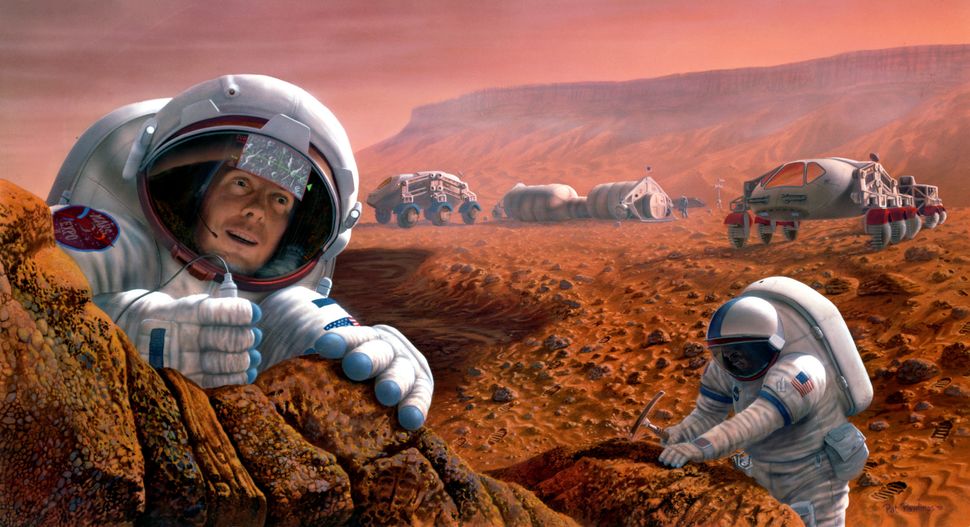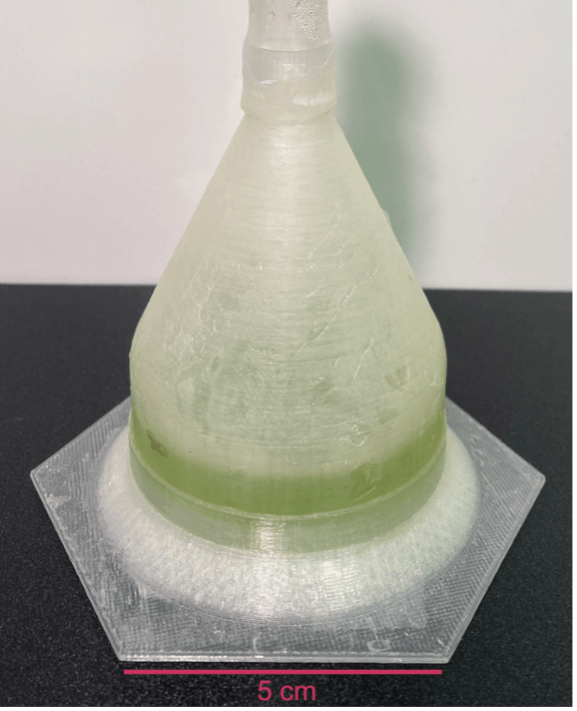This wild bioplastic made of algae just aced a Mars pressure test. Can astronauts use it to build on the Red Planet?
"As this type of technology develops, it's going to have spinoff benefits for sustainability technology here on Earth as well."

In a potential milestone for space exploration, scientists have successfully grown algae under simulated Martian conditions using equipment made from biodegradable bioplastics — a step that could bring long-term space colonization closer to reality.
As interest in human missions to Mars grows, scientists are focusing on how to sustain life in space without constant resupply from Earth. A team of researchers led by Robin Wordsworth of Harvard University demonstrated that green algae can not only survive but thrive inside bioplastic chambers designed to mimic the extreme environment of the Red Planet.
"If you have a habitat that is composed of bioplastic, and it grows algae within it, that algae could produce more bioplastic," Wordsworth said in a statement. "So you start to have a closed-loop system that can sustain itself and even grow through time."
In laboratory tests, Wordsworth and his team cultivated a common type of green algae called Dunaliella tertiolecta inside a 3D-printed chamber made from polylactic acid, which is a biodegradable plastic derived from natural sources. The chamber was engineered to replicate the thin, carbon dioxide–rich atmosphere of Mars, which has a surface pressure less than 1% that of Earth.
Despite these extreme conditions, the algae were able to perform photosynthesis, according to the statement.
"We have demonstrated that habitable conditions can be maintained in extraterrestrial environments using only biologically produced materials," the researchers wrote in a paper published earlier this month in the journal Science Advances. "The results reported here represent an important step forward, but many additional steps are needed to enable robust ecosystems to be sustained long-term beyond Earth."
Wordsworth and his team attribute the experiment’s success to the bioplastic chamber, which shielded the algae from harmful ultraviolet radiation while still allowing sufficient light to penetrate. Though liquid water cannot normally exist at such low pressures, the team created a pressure gradient within the chamber that stabilized liquid water, enabling biological activity.
Breaking space news, the latest updates on rocket launches, skywatching events and more!

The results suggest that bioplastics could be a viable material for constructing habitats on Mars and other celestial bodies, scientists say. Unlike conventional industrial materials, which are expensive to transport and difficult to recycle off-Earth, bioplastics can potentially be produced and reused on-site using biological processes, according to the statement.
The latest proof of concept experiment builds on earlier work by Wordsworth’s team, which showed that silica aerogels could replicate Earth’s greenhouse effect to support life in cold, low-pressure environments. By combining algae chambers for bioplastic production with aerogels for heat and pressure regulation, the researchers say they are making real progress toward self-sustaining space habitats.
Next, the team plans to test their bioplastic systems in vacuum conditions relevant to moon and deep-space missions.
"The concept of biomaterial habitats is fundamentally interesting and can support humans living in space," Wordsworth said in the statement.
"As this type of technology develops, it's going to have spinoff benefits for sustainability technology here on Earth as well."

Sharmila Kuthunur is an independent space journalist based in Bengaluru, India. Her work has also appeared in Scientific American, Science, Astronomy and Live Science, among other publications. She holds a master's degree in journalism from Northeastern University in Boston.
You must confirm your public display name before commenting
Please logout and then login again, you will then be prompted to enter your display name.
